
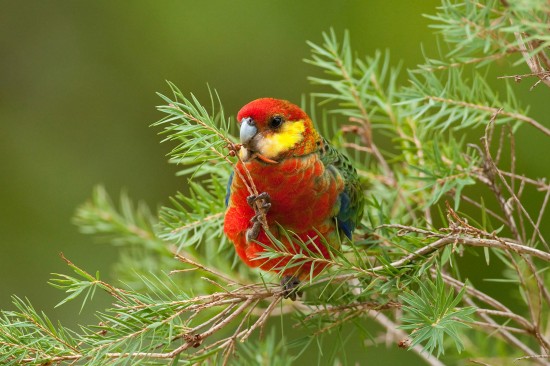
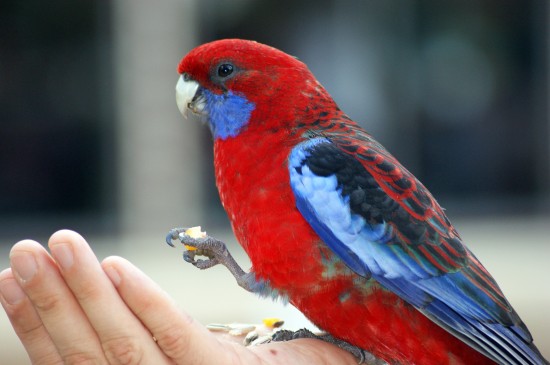
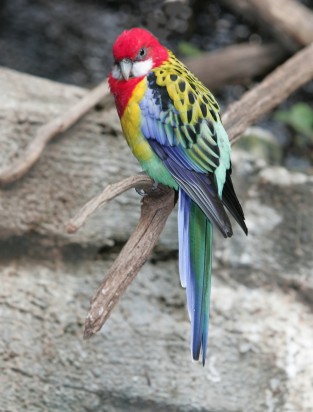
Rosellas are a family of Australian parrots which have become popular in aviculture and are available in a wonderful range of colours. They have a reputation for being aggressive in captivity with other birds so are commonly kept either amongst similar birds or in separate areas. Their average lifespan is 20 years.
The Western Rosella (Platycercus icterotis) is also known as the Stanley Rosella and is the smallest of the family. It lives in the eucalyptus forests of south-west Australia and is around 25-30cm in length. Their head is red down to the breast with white or beige yellow cheeks and blue and green patterns on the wings. Their beaks are horn coloured.
In the wild, they live in pairs but gather together in larger flocks to forage at different times of the year. They eat grass and seeds and nest in tree trunk hollows. The female does the incubation of the eggs and only leaves the nest on a morning and afternoon to eat the food brought to her by her mate.
The Crimson Rosella (Platycercus elegans) lives in eastern and south-east Australia and has been introduced into Norfolk Island and New Zealand. It tends to be found in the mountainous forests and garden areas. They are slightly larger than their cousins at 36cm and have been divided up into five subspecies depending on where they live. The different subspecies have differences to the colour of the plumage but all have blue cheeks and black scallop-type markings on the wings. They have blue tail feathers, and the bill is pale grey.
In the wild, these birds are monogamous and live as pairs. Juveniles tend to gather in groups around 20 in number to forage. They feed on fruit, seeds, nectar, berries and nuts and can be considered pests to farms as they eat the crops. They will also take insects and larvae including termites and beetles.
In captivity, these are birds who need stimulation as they are very intelligent and can get in mischief if not supervised when out of their cage. If hand-reared, they will need to be handled daily or otherwise will loose their confidence of humans. They will happily live on a good cockatiel mix with fruit and vegetables added.
The Green Rosella (Platycercus calendonicus) is also known as the Tasmanian Rosella as it lives only on Tasmania and the Bass Strait islands. These are the longest members of the family at around 37cm in length and are mostly green and yellow with a red band above the beak and bright blue feathers on the cheeks. The long tail feathers are green with blue outer edges and a pale grey beak. They live in areas with tree cover anywhere up to 1500m from sea level.
The Green Rosella will eat berries, seeds, fruit and nuts as well as flowers and insects. It enjoys hawthorn berries when it can find them. These birds breed from October to January with 4-5 eggs in a tree trunk up to 100 feet off the ground.
Of all the rosella species, they are said to be the hardiest in captivity but also the easiest to keep and breed.
The Pale-headed Rosella (Platycercus adscitus) is a parrot of north-east Australia where it lives in open woodland. It has a pale yellow head, white cheeks and scalloped black and gold feathers along its back. The breast and belly are pale blue. They are around 33cm in length with a pale blue-white bill and dark grey legs.
Like its cousins, it eats grass and tree seeds and fruit. Some of its favourites are the River Red-gum and the Scotch Thistle where it has been introduced. Their breeding season is dictated by where exactly they live, varying from September to December to February to June. Five or six eggs are laid in a tree hollow.
The Eastern Rosella (Platycercus eximius) lives in the south-east of Australia, Tasmania and has been introduced to New Zealand’s North Island and around Dunedin on the South Island. They are around 30cm in length with a red head and white cheeks, red upper breast and yellow lower breast. Across the back are black feathers tinged with green or yellow then the lower feathers are blue with dark green tail. The females can be sexed visually as are less colourful than the males and the feathers have a more mottled appearance.
The Eastern Rosella lives in lightly wooded areas, open forests, gardens, parks and bushland. It eats a similar diet to other rosella species and breeding usually occurs in August to January in the wild.
In captivity, these birds are best suited to a large aviary with similar sized birds as can harm smaller birds purely due to size difference and strength of beak. They can be hand-raised as pets but need plentiful attention and stimulation and may still never be completely tamed. They can also be quite noisy on occasions so apartment dwellers may not find these the most suitable bird.
The Northern Rosella (Platycercus venstus) is found in around the Gulf of Capentaria, Arnhem Land and the Kimberleys in Australia and is also known as Brown’s Parakeet. It is darkest in colouration of the rosellas, with a black head and white cheeks lending to blue on the breast. The back and wing feathers are also black while the belly and rump are pale yellow. They are usually 28cm in length.
These birds live in pairs and do not mix with others. They also nest in winter, which if maintained into captivity, can mean the need for extra heat in this country.
These small parrots are beautifully coloured and very intelligent. They make good aviary birds in the right conditions and good pets if their owner has some experience with parrots. They are perhaps not ideal as a start-up parrot as can go through biting phases which can be intimidating, not to mention painful! But in the right conditions, with the right level of stimulation, they are fascinating and entertaining to watch and listen to.
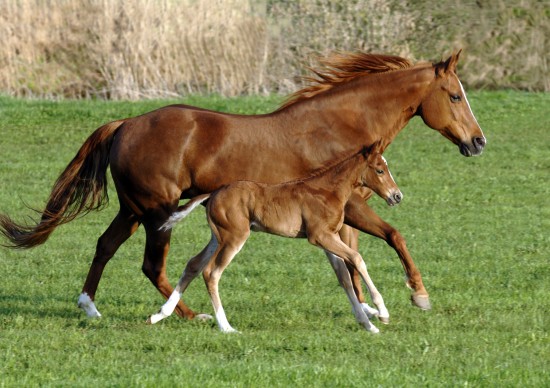 Research Shows Foals Do Learn From Their Mothers
Research Shows Fo
Research Shows Foals Do Learn From Their Mothers
Research Shows Fo
 Dealing With A Puppy That Destroys All Of Their Toys
Dealing With A Pu
Dealing With A Puppy That Destroys All Of Their Toys
Dealing With A Pu
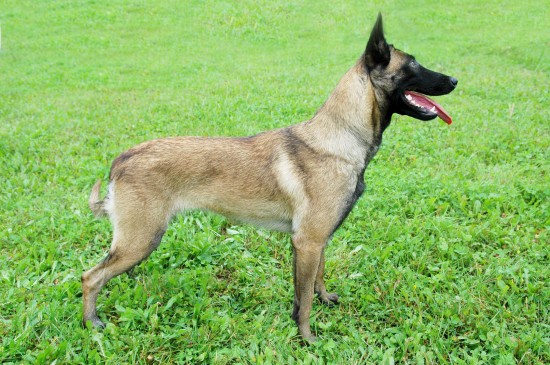 Belgian Malinois (shepherd Dog) Temperament And Handling
Belgian Malinois
Belgian Malinois (shepherd Dog) Temperament And Handling
Belgian Malinois
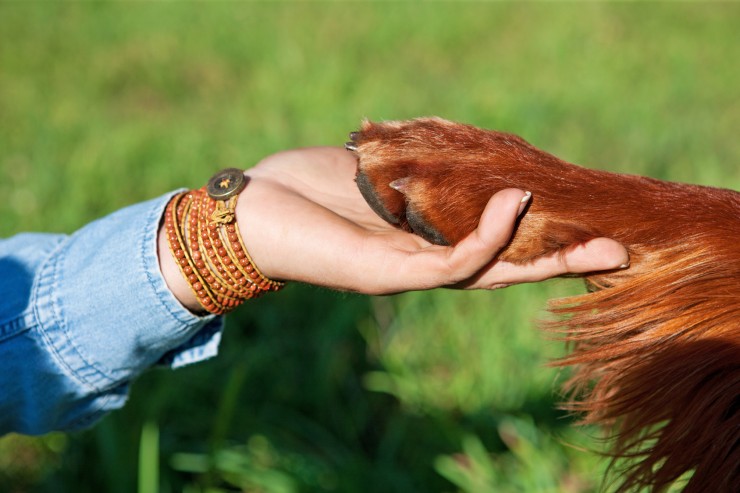 How To Disinfect And Care For Minor Scratches On Your Dog’s Skin
How To Disinfect
How To Disinfect And Care For Minor Scratches On Your Dog’s Skin
How To Disinfect
 What Makes A Dog Become Food Aggressive?
What Makes A Dog
What Makes A Dog Become Food Aggressive?
What Makes A Dog
Copyright © 2005-2016 Pet Information All Rights Reserved
Contact us: www162date@outlook.com